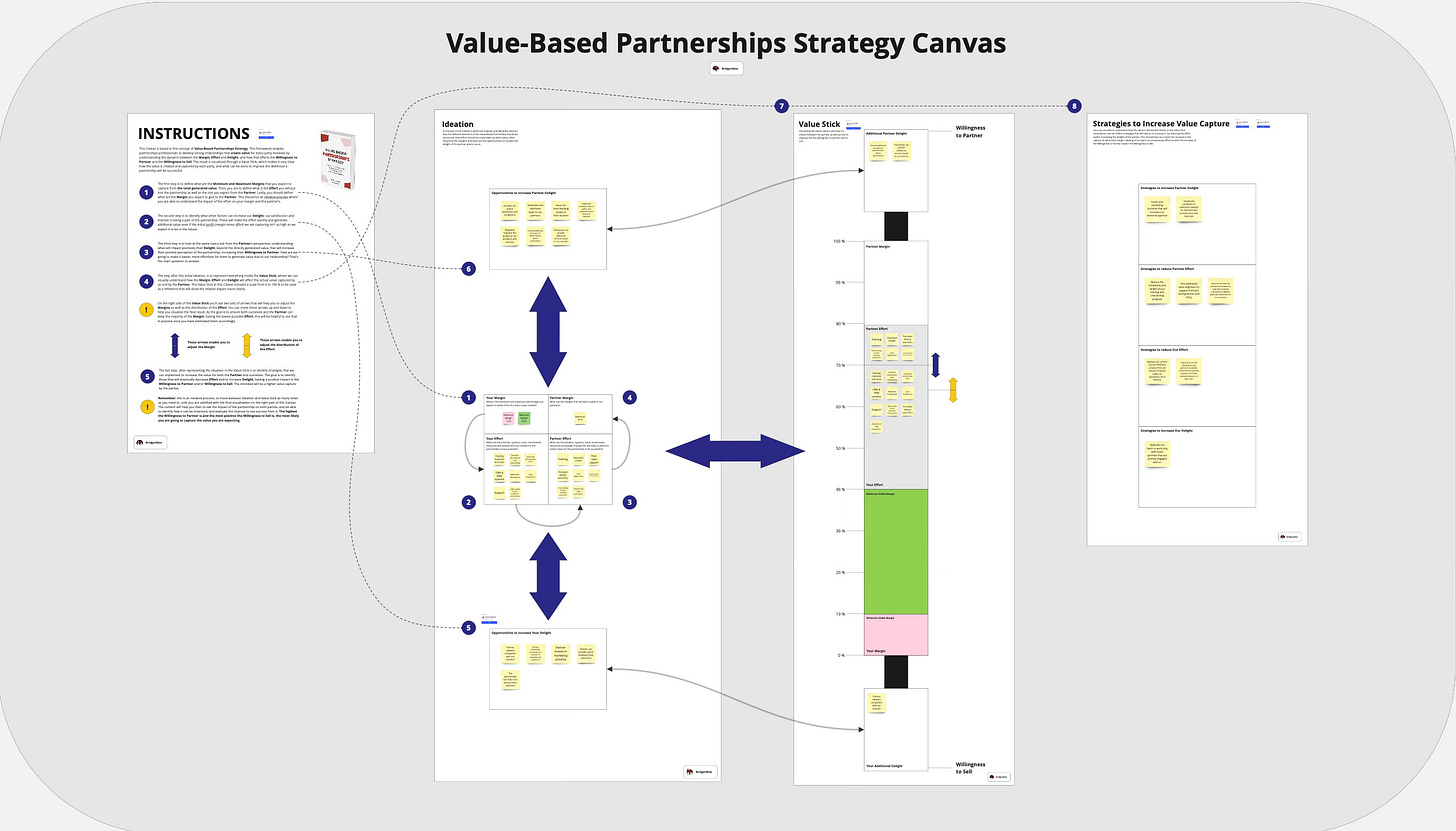Back in May I released my first e-book, an Introduction to Value-Based Partnerships Strategy, where I describe a framework that can help any partnerships professional in designing alliances that will deliver value to everyone involved.
The concept considers how the interaction between Margin, Effort and Delight can increase or decrease the value of a partnership, as well as willingness to partner between two organizations.
I am regularly developing this framework, which I use in my daily job, in order to make it clearer and more practical. As part of that continuous improvement, I recently have released a first version of a Canvas that can be used to design a Value-Based Partnerships Strategy in a simple and visual way.
The Platform: Miro
The platform I decided to use to release the Canvas is Miro, a super-intuitive and easy-to-use innovation workspace. I have been using it for some time, making my work not only more productive and efficient, but also more enjoyable.
It’s the perfect space to release a tool of this kind, as it can be used for free, it enables online collaboration, and it provides the possibility of including a TalkTrack.
TalkTracks are interactive video and audio walkthroughs that you can include in your Miro boards so anyone that access them can understand better how to use them. This helped me to include a voice-over of how to use the Canvas, which I think will make the process a lot easier to follow.
I really enjoy using Miro as it doesn’t only provides out-of-the-box templates for many different use cases and frameworks. There’s also the Miroverse, where any user can upload their own templates, becoming instantly available for the rest of the community. That’s where you can find this Canvas.
The Tool: The Value-Based Partnerships Strategy Canvas
The Canvas will help professionals building partnerships strategies, no matter if they are starting from zero or reviewing their existing ones, applying the concepts behind Value-Based Partnerships.
It consists of three sections:
Ideation,
Value-Stick,
Strategies.
The Canvas will lead the user through the definition of margins for their organization and their partners, understanding the available opportunities to create delight, and how to allocate the effort to each one of the involved parties.
Utilising the Value-Stick, a key component of this framework, they will be able to visualise how their ideas and partnerships requirements and opportunities could affect positively - or negatively - the overall value captured as well as the willingness to partner from others.
The Goal: To Pick the Right Strategies to Increase Value Capture
The first two steps (Ideation and Value-Stick) have the goal of identifying strategies that can be used to increase the value capture process. This can be achieved in two ways: reducing the effort or increasing the delight of any or both of the parties.
Through the Canvas, it becomes clear how margins can affect positively or negatively one or both of the parties and how the effort is distributed among them.
Moreover, it can be used as a way to brainstorm opportunities, considering the different elements of the partnerships. Once everything is visualised, then it’s possible to choose which ideas can be transformed into actions, helping to generate more value for everybody.
The increase in value for each party, directly or indirectly enables the partnership to become more successful - and delightful - over time.
Utilising a tool like the Value-Based Partnerships Strategy Canvas helps to iterate this process several times, which is key to find the right strategies for value creation and capture, rather than going ahead with a limited view of the balance between effort, margin and delight that can set the alliance in the wrong path if not addressed early enough in the process.
Partnerships that are based on the creation of value for everyone involved have the highest chances of success, and this tool will help you to make sure this happens and develops as you and your partners expect.
I hope this tool helps partnerships professionals like me to identify the best strategies to design successful partnerships as this framework has helped me during my career. Looking forward to hearing your feedback on how to improve it!




